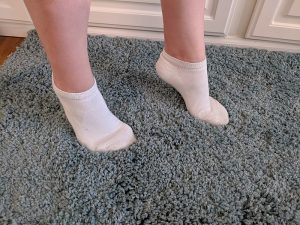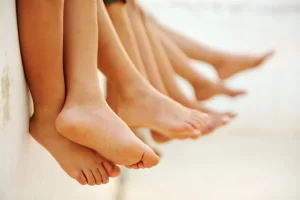
Childhood obesity can lead to foot pain and other foot-related problems. Excess weight puts extra pressure on the feet and can cause conditions such as flat feet, plantar fasciitis, and Sever’s disease. Flat feet occur when the arches of the feet collapse, which can cause pain and discomfort. Plantar fasciitis is an inflammation of the plantar fascia, the thick band of tissue that connects the heel bone to the toes, and it causes pain in the heel and arch of the foot. Sever’s disease is a condition that causes heel pain in children and adolescents, and it is caused by inflammation of the growth plate in the heel bone.
Additionally, children who are overweight may be less physically active, which can lead to weaker foot muscles and poor balance. This can increase the risk of falls and other foot injuries.
If a child is experiencing foot pain, it is important to see a doctor to determine the cause and appropriate treatment. Addressing obesity and making lifestyle changes, such as increasing physical activity and eating a healthy diet, can also help alleviate foot pain and prevent future problems.





